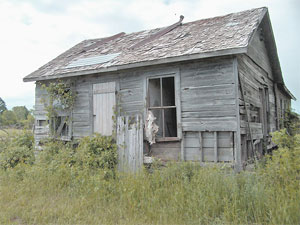>The report shows a November national foreclosure
> rate of one foreclosure for every 1,615 U.S.
>households.

Now what does this mean? In October, RealtyTrac says foreclosures spiked 19% to set a new record. Is there a lot of volatility in foreclosures nationwide?
The November stats are not available on their web site to the general public as of this posting so we can’t look at it more closely.
I think the problem with RealtyTrac’s press release philosophy is their propensity to release their headline figure as a month over month change – this month a 12% decrease instead of an annual change. Last month this indicator jumped 19%.
The month over month change shows the most volatility. They should be presenting a yearly change when dealing with monthly figures. They are not considering seasonality by using this method but it definitely gets everyone’s attention. Case in point, last month [Connecticut foreclosures increased](http://www.realtytrac.com/news/press/pressRelease.asp?PressReleaseID=67) 7,710.71%. Sounds pretty serious, but its actually pretty ridiculous.
Small stat universe + month to month volatility = misleading results.
[In a previous post, I had similar concerns but for different reasons with the monthly stats released by foreclosuremass.com [Matrix]](http://matrix.millersamuelv2.wpenginepowered.com/?p=276)2 Comments
Comments are closed.


Jonathon:
It might surprise you to learn that I agree with some of your concerns. When contacted by the press, I often counsel people NOT to read too much into month-to-month changes, as there are sometimes variables that inflate or deflate monthly percentages (such as your recent Connecticut example).
Beginning with our January 2006 data, when we have a full year of data from 2005 to compare it with, we will begin issuing year-over-year results along with the month-to-month numbers. We’ll also be releasing a full-year report for 2005 in January of 2006, which puts the numbers in better context.
It’s certainly not our intention to “mislead” anyone with our monthly reports. The numbers are what they are; and, viewed from a national perspective, present what we believe is the most accurate snapshot of foreclosure activity across the country.
As you correctly point out, the smaller the sample size, the more margin there is for large variances; so focusing only on a month-to-month change in a state–or a county–can lead someone to make less than accurate conaclusions. We make a point to put contact information in the press releases, and welcome anyone to contact us with questions about the data.
I’m always more than willing to help interpret and analyze the report for anyone with questions or concerns.
Best Regards,
Rick
Rick – thanks for your candor and I am certain you mean well in your efforts to publish information. I don’t doubt your sincerity and I look forward to seeing your annual report.
While I realize that you can’t control how the media reports your numbers, I would think some other presentation is more useful. If you don’t have prior year stats yet, something like quarter over quarter or a moving average might be less “misleading”. In the case of the CT numbers, its not simply “the numbers are the numbers” because the message is definitely misleading.
I think the goal is to provide a trend or a pattern. Perhaps if you presented the hard numbers instead of just percentages or relate your numbers to the total number of housing units in that market, then the data set is large enough to analyze.